An Opportunity for Color-Accurate Mockups and Prototypes in Packaging
The printing industry continues to face a plethora of challenges. Paper mills are experiencing reduced production (or closure); printers are grappling with shipping issues from overseas; labor shortages and strikes further compound the situation. Amidst the difficulty, package printing has proven to be a prolific segment in an otherwise turbulent market.
For brand owners, navigating the tail end of the pandemic has highlighted the importance and need for new and innovative ways to captivate consumers and make that lasting impression. For printers, it’s created an opportunity to delve into new market segments—wide format and digital package printing becoming the seemingly popular choices.
In the competitive marketplace we find ourselves in today, creative packaging plays a pivotal role in capturing consumers and maintaining an established, loyal customer base. The use of printed, color-accurate mockups and prototypes have become more instrumental for brands in the design and development process, than in years’ past. Why?
Mockups and Prototypes in Packaging
Great design reinforces brand recognition and loyalty.
The physical representation of a product provides valuable insight into both the functional aspects of a design—but also the parts of design that touch our senses.
How will the package look on a POP display?
How does it represent the brand in comparison to competitive options?
How does it look in different lighting conditions—and how does that package look and feel in a retail environment?
Successful prototyping offers brands the ability to positively impact the consumer experience, which in turn creates increased profit and brand loyalty. For the printer? It’s a lucrative source of added revenue.
Shift of Consumer Preference
The pandemic delivered a gift right into the laps of package printers—that is, the shift of consumers from large, global brands to smaller and more local/ regional brands.
It would seem we are all tending to stay a bit closer to home in COVID’s aftermath. Consumers have been more conscious of the importance of shopping local + supporting local businesses—largely due to pandemic lockdowns and restrictions that limited our mobility and encouraged us to explore and appreciate options that are in our immediate vicinity. As a result, we tended to turn to regional brands to support our communities and contribute to our local economy.
For me, this meant tossing money at my local coffee and record store, rather than driving through a popular coffee chain. It meant buying hand poured candles, all-natural bath products, and loose tea from the boutique down the street. It meant grabbing curbside crowlers from the brewery around the corner, rather than swinging through the ubiquitous, big-name wine store. This shift toward smaller, regional brands has been particularly evident in sectors such as food and beverage, as well as personal care products.
The gift for printers?
For printers, the shift to smaller and regional brands is a gift waiting to be unwrapped. In my opinion, the smaller, regional brands often lack the capacity to prototype their packaging in-house— for a variety of reasons.
As these brands emerged during the pandemic, their founders became their own art directors, developing their own brand vision and messaging. They are most heavily impacted by errors in their shorter-run production, and they may lack some of the experience in packaging design and innovation that you’ll find in the big brands with massive creative departments and a plethora of experience. Other times, they are the most creative and need some assistance in visually communicating the design intent.
This presents an enormous opportunity for printers, especially independent, locally owned printers, who can produce the mockup capabilities that these brands, require.
Color Management
At CGS ORIS I AMERICAS, we’ve developed sophisticated color management software solutions that enable designers and printers to control color reproduction—both in a prototyping capacity, as well as in a production capacity. There are other software options available in the market that also offer some great options for companies interested in exploring the mockup and prototyping space.
In my experience working with brand owners, creatives, conventional and package printers—the most palatable of software investments, leveraged with hardware technology that is already available, yield rapid returns on investment. Often, a device that is intended for sign/ banner work can be repurposed to create packaging mockups. A device that is used to produce the occasional request for promotional products may be utilized to simulate varnish and emboss, or to produce a finishing effect like foiling on a packaging prototype.
The challenges brought on by the pandemic have opened the door to some new market segments and the potential for increased revenue without the need for significant investments. If you’re considering delving into packaging or offering new services to brand clients, in my opinion the opportunities in the prototyping space are abundant. It’s true, what they say— “With challenge, comes opportunity”.
Bio:
Lynn Leppo is the Business Development Manager for Eastern North America at CGS ORIS I AMERICAS. She is a certified G7 Expert and Color Management Professional with global industry association, IDEALLIANCE.
With an entrepreneurial spirit and a passion for thinking outside the box, Lynn is a successful and self-motivated professional who has worked through various roles in her twelve-year career with CGS ORIS. Previously an ORIS Media Sales Manager and ORIS Media Product Manager, Lynn is an industry subject matter expert in proofing substrates and a CMP Expert in Premedia. A resident of the historic Lowertown neighborhood of St. Paul, Minnesota, she is an active artist/ painter within the local arts community. Outside the office, Lynn enjoys walking the Mississippi with her dog, Jett, road biking, exploring record stores, playing cribbage, and tasting hazy IPAs at the neighborhood brewery.

